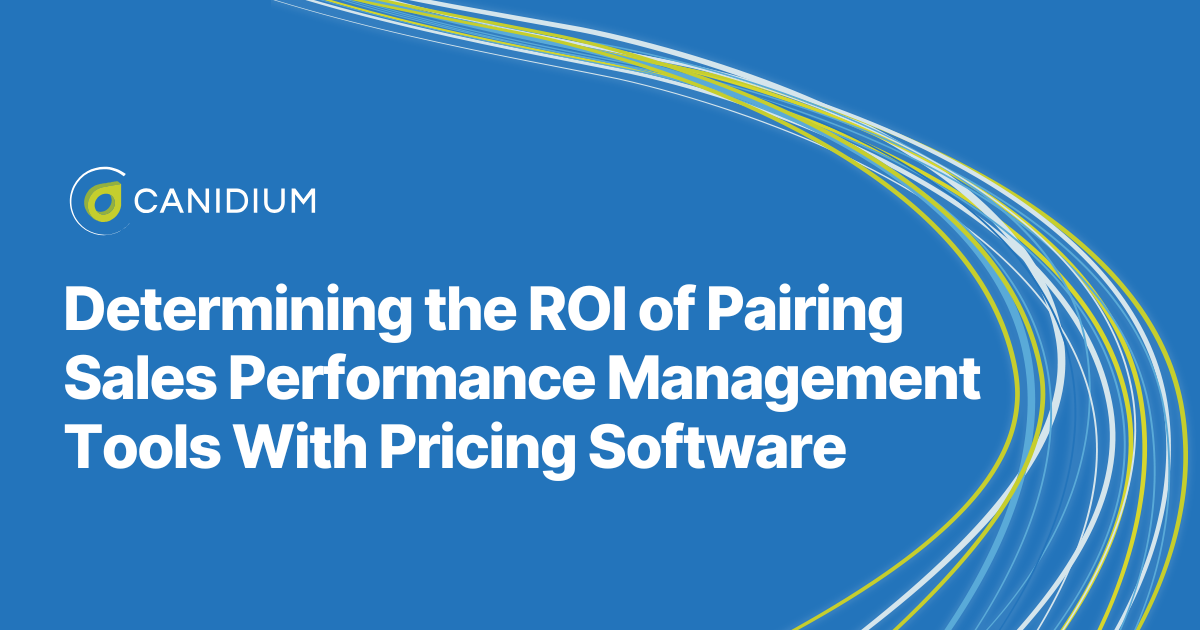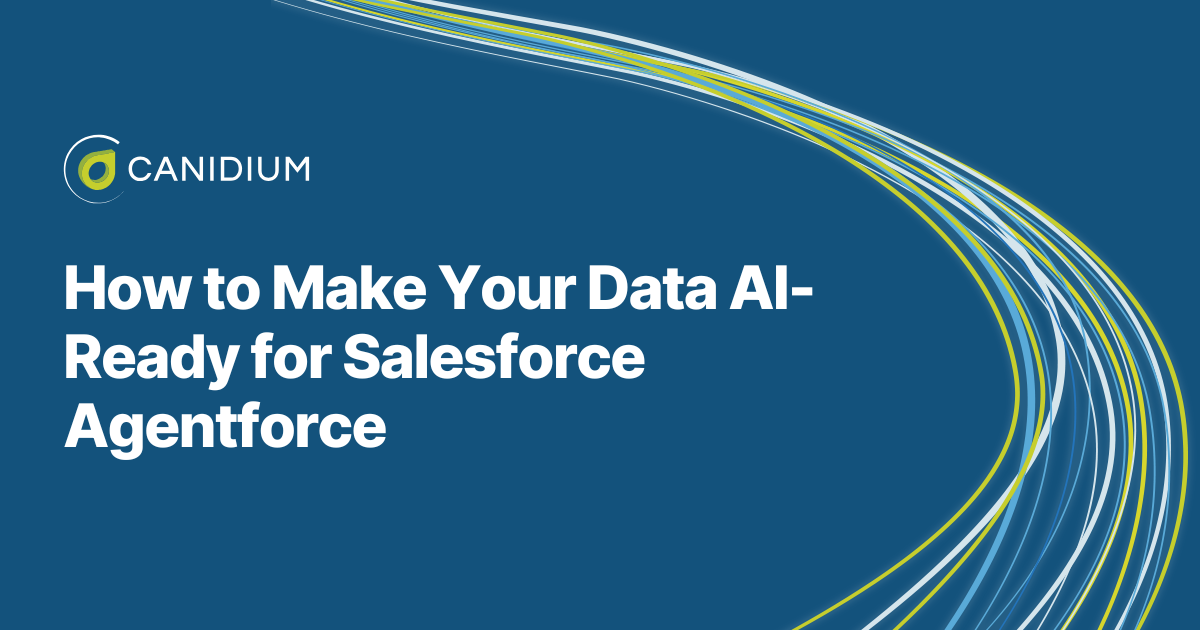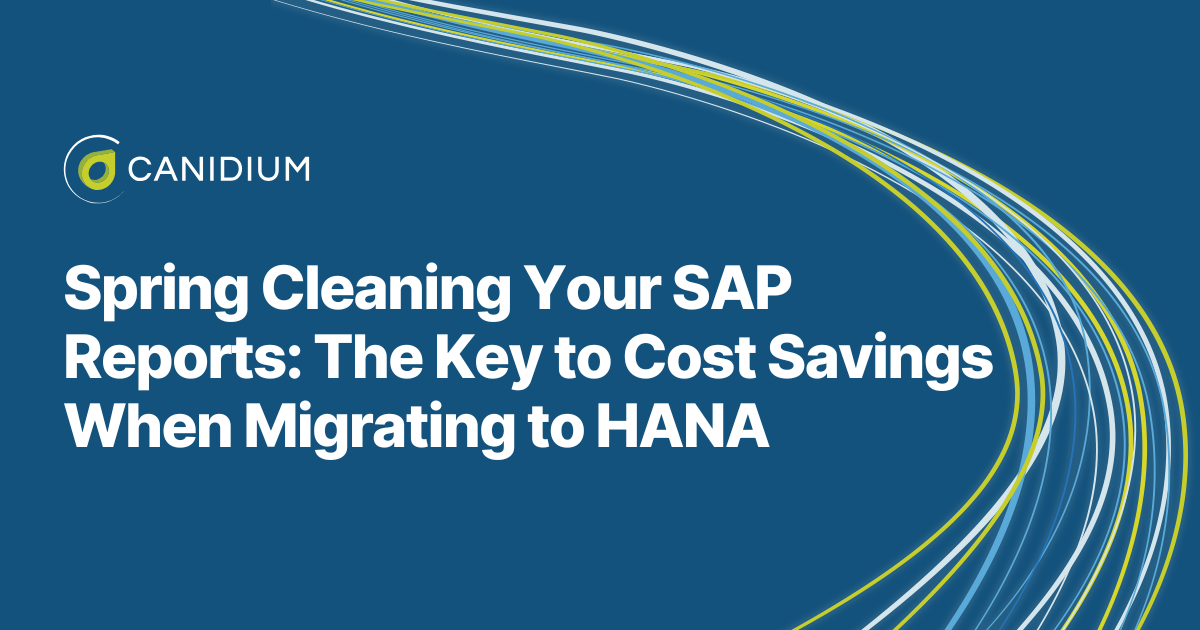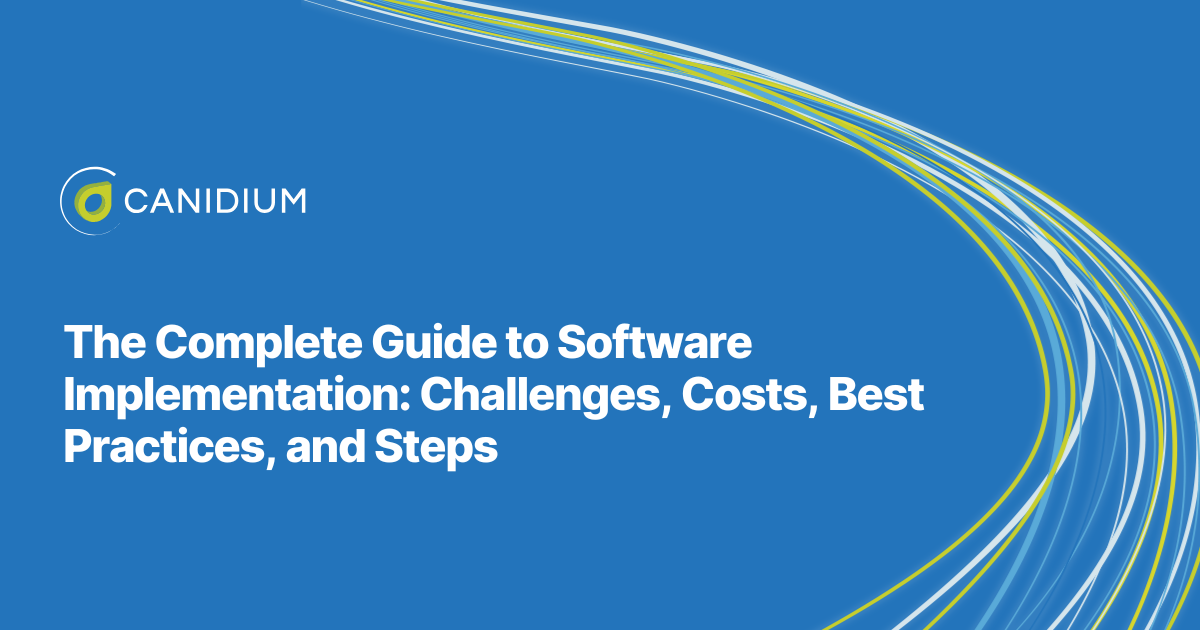Investments always carry risk. However, the more you know about the costs and benefits of a new software solution before you begin an implementation project, the better.
At Canidium, our software implementation experts work across industries and software solutions to help clients determine which investments will yield the highest ROI for their unique goals and business objectives.
To give you a head start, this article explains how to estimate your potential ROI from implementing both pricing software and a sales performance management solution.
- Identify The Potential Benefits of Combining a Sales Performance Management System With Price Optimization Software
- Estimate The Costs of Sales Performance Management and Pricing Software
- Calculate The Total ROI of Combining Pricing Solutions With Sales Performance Management Software
How to Estimate The Returns of Sales Performance Management and Pricing Software
Just as your business structure, challenges, pricing models, and teams are unique, the returns you garner from software investments will be specific to your organization. Offering an overarching ROI for pricing software or sales performance management (SPM) solutions without accounting for the independent factors of each investor would be inaccurate.
The size of your company, the structure of your sales cycle, the definition of business success, and current inefficiencies within processes all impact your returns. At the same time, the scale and configuration of your software implementation project, combined with the licensing fees of your chosen solution, will define your costs. Consequently, you will need to consult with a software implementation partner and define your requirements before calculating a customized ROI estimate is possible. However, it is possible to estimate the potential ROI range you may incur by understanding the factors that impact your costs and returns and how your organization relates to these considerations.
With this in mind, to determine your potential ROI for price optimization software and sales performance management dual implementations, you will need to evaluate how the following benefits and costs relate to your organization.
Identify The Potential Benefits of Combining a Sales Performance Management System With Price Optimization Software
To determine what the potential returns you will receive from implementing effective sales performance management solutions with price management software, the first step is evaluating the benefits.
The following benefits of dual implementations provide an overview of the returns you will see:
Improving Sales Strategy and Profit Margins
Integrating pricing optimization tools with sales performance management software significantly increases revenue by enabling real-time, data-driven pricing adjustments and enhancing sales team performance through effective incentive management. Pricing tools analyze historical sales data and current market conditions to set optimal prices that maximize profit while remaining competitive. Simultaneously, SPM solutions incentivize sales teams with transparent and timely commissions based on these optimized prices, driving them to close more deals and pursue higher-value transactions. This dual approach not only improves win rates but also boosts average order values, aligning sales efforts with strategic pricing to enhance overall financial performance and sustain a competitive edge in volatile markets.
The combination of these tools provides several direct benefits to an organization. Firstly, it improves decision-making for sales teams, giving them access to data that helps set profitable pricing points while considering the impact on their commissions. Secondly, it streamlines administrative processes significantly. Integrating these tools simplifies and automates commission management for sales compensation managers and finance personnel, reducing the laborious task of manually calculating payouts and ensuring accuracy in financial reporting. This synergy between pricing strategies and sales performance management results in higher win rates and potentially larger order values, thus boosting overall sales and profitability. Moreover, it aligns sales strategies with business goals, enhances forecasting accuracy, and increases transparency across departments, helping companies navigate economic volatility more effectively while maintaining competitive advantage.
Leveraging Dynamic Prices in Sales Processes
When B2B and B2C companies utilize AI-based tools to enhance the most impactful pricing elements within their organizations, they can increase EBITDA by 2 to 5 percentage points. These tools provide advanced analytics and reporting solutions that allow leadership and sales teams to back their pricing decisions on business intelligence. At the same time, pricing solutions enact these changes rapidly, increasing the speed with which you see returns from optimized prices.
Take this real-world example: Canidium's Pricefx implementation team collaborated with a company struggling with outdated pricing processes during a period of sharp inflation and frequent tariff changes. The company depended on manual methods, using Excel spreadsheets to manage and analyze data from their Enterprise Resource Planning (ERP) system and other sources. This laborious approach took a staggering 90 days to update list prices, during which the company faced rising costs without being able to adjust prices, eroding their profit margins.
Realizing the need for a more streamlined solution, the company engaged Canidium to implement price optimization software. The new solution integrates directly with their ERP and other systems, allowing instant data flow and eliminating the manual data handling that previously slowed them down. Pricing analytics software enabled quick recalculations and adjustments based on live market data and set rules, accelerating the price adjustment process. Additionally, the automated workflow for pricing approvals reduced the need for extensive email discussions, significantly shortening the approval period. As a result of this project, the company cut the price change cycle from 90 days to less than a week.
Now, let's examine how integrating sales performance management software into this scenario would impact these results. Implementing both solutions allows organizations to align sales strategies with real-time pricing adjustments. This ensures that sales teams are equipped with the most current pricing data, enabling informed and competitive offers to customers. Moreover, the integration allows for dynamic adjustments in sales incentives, aligning them with current business priorities, such as promoting specific products or focusing on higher-margin items. This keeps the sales team motivated and strategically focused, directly influencing profitability. Additionally, SPM systems enhance forecasting and analytics, providing deeper insights into how pricing strategies affect sales volume and revenue, thus enabling companies to proactively adjust their strategies. Overall, this holistic approach boosts operational efficiency and enhances a company's agility and responsiveness in volatile markets, bolstering profitability and competitive edge.
Increasing Business and Operational Efficiency
The combined workflow streamlining features of pricing and SPM tools can eliminate inefficient processes. Automation helps by reducing manual labor, minimizing errors, and accelerating decision-making. Pricing tools, for instance, analyze vast datasets to recommend optimal pricing strategies automatically, ensuring decisions are based on comprehensive, unbiased data. Concurrently, SPM tools automate critical sales functions, including tracking performance, managing territories, and calculating commissions, which decreases administrative burdens and lets sales teams focus on strategic customer engagements.
Real-time data integration from systems like ERP and CRM provides a unified view that enhances accessibility and enables quick, informed decision-making. This automation streamlines workflows, aligns sales activities with corporate objectives, and improves compliance by reducing human errors in pricing and commission calculations. Additionally, it allows companies to quickly adapt to market changes; pricing tools can adjust prices in response to market dynamics, while SPM tools can modify commission structures to drive sales focus toward strategic products or markets. For example, a tech company using pricing software and sales performance management could dynamically price new gadgets and adjust sales commissions to capitalize on market demand, enhancing both revenue and operational efficiency. Thus, by reducing overhead and enhancing agility, automation through these tools streamlines operations and strengthens the overall business framework.
Enhancing Sales Rep Productivity
Integrating pricing optimization tools and sales performance management software significantly boosts sales rep productivity by automating key processes and aligning incentives with market dynamics. Pricing tools like Pricefx analyze data to provide real-time pricing recommendations, freeing reps from manual analysis and enabling quicker deal closures. Concurrently, SPM solutions like Xactly, SAP SuccessFactors Incentive Management (SFIM), Varicent, or Pricefx's Sales Compensation Manager automate commission calculations, adjusting earnings in real-time based on sales performance, which motivates reps to align with the pricing strategies. This synergy allows reps to access up-to-date competitive pricing and potential earnings on the go, focusing their efforts on the most lucrative opportunities, thus enhancing productivity and driving effective sales strategies.
Consider a consumer electronics company employing pricing software and an SPM solution to manage its sales team. During a new product launch, Pricefx analyzes competitor pricing, customer demand, and cost factors to recommend a dynamic pricing strategy that maximizes profit margins while remaining competitive. Simultaneously, the SPM solution updates commission structures to offer higher incentives for selling this new product, particularly in high-demand regions.
Sales reps, equipped with tablets that provide real-time data through integrated apps, can see that the new product is priced aggressively against competitors but still within a profitable range. They also view their higher potential commissions for this product than others. Motivated by higher earnings and confidence in their pricing strategy, they focus on regions identified as high opportunity, using tailored sales pitches highlighting the product's competitive pricing.
SPM solutions also facilitate streamlined incentive compensation management, allowing sales managers to motivate employees and target specific quotas. As a result, companies can boost their productivity by an average of 22%.
The result is a highly productive sales force that not only understands the market dynamics but is also motivated to push sales where they are most likely to succeed, achieving faster closures and higher volumes, which in turn drives up their commissions and overall satisfaction.
Enabling Data-Driven Decisions With Analytics-Based Actionable Insights
Rooting business decisions in fact has a marked impact on profitability. Companies that leverage data-driven decision-making are 5% more productive and 6% more profitable than competitors. Integrating pricing optimization tools with SPM solutions enhances data-driven decision-making by providing comprehensive analytics and actionable insights in several key areas:
Pricing Strategy Optimization
Pricing tools use analytics to understand past performance, market trends, and consumer behavior, enabling businesses to set prices that maximize both competitiveness and profitability. This can include dynamic adjustments for promotions, seasonal changes, or shifts in supply and demand.
Sales Forecasting and Planning
SPM solutions analyze historical sales data to forecast future sales trends. This helps organizations anticipate market demands, adjust sales targets, and allocate resources efficiently. Enhanced forecasting accuracy ensures that sales strategies are robust and responsive to market conditions.
Commission and Incentive Analysis
SPM systems provide insights into the effectiveness of current commission structures and incentives. Analytics help identify which incentives drive the best sales performances, allowing for the optimization of compensation plans to motivate the sales force effectively and align their goals with the company's strategic objectives.
Customer Segmentation and Targeting
Advanced analytics from both pricing and SPM tools help businesses segment and target customers more effectively. By understanding customer buying behaviors, price sensitivity, and profitability, companies can tailor their sales and marketing strategies to attract the most valuable customers and maximize revenue from each segment.
Product Performance Analysis
Combining insights from pricing and sales performance data allows companies to identify which products or services are performing well and which are underperforming. This enables more informed decisions regarding product development, marketing strategies, and inventory management.
Market Response and Competitor Analysis
Real-time data analysis helps businesses understand how customers and competitors react to pricing changes. This immediate feedback allows for swift adjustments in strategy, ensuring that businesses can remain competitive and proactive in adapting to market dynamics.
Operational Efficiency and Process Improvement
Both pricing optimization and SPM solutions provide analytics highlighting inefficiencies in sales and pricing processes. Insights into these areas can lead to significant improvements in operational efficiency, such as streamlining approval workflows, automating data entry, and reducing the cycle time for pricing adjustments and commission payments.
Giving Employees Time Back
A recent survey found that being overworked is the most common source of job stress, and it is easy to see why. Increasing productivity to meet expanding business objectives while simultaneously maintaining existing administrative functions creates an ever-growing task load on individual workers. However, stunting business growth is not a viable solution to this issue, and many organizations do not have room in the budget for extensive workforce expansion.
Employee burnout is ubiquitous, impacting 77% of surveyed workers. Out of these respondents, 91% report an unmanageable amount of stress or frustration negatively affecting the quality of their work. At the same time, 83% of respondents say burnout from work can negatively impact their personal relationships.
Relieving the burden on overworked employees is imperative, not just for a business's long-term health but also for each employee's individual health. Luckily, advancements in automation and the subsequent expansion of business technology applications have the potential to solve employee burnout.
"Burned-out employees are 2.6 times as likely to be actively seeking a different job, 63% more likely to take a sick day, and 23% more likely to visit the emergency room." - Harvard Business Review.
More importantly, a Stanford Business study found that 120,000 deaths per year in the U.S. may be attributed to how companies manage their workforces, specifically in regard to workplace stressors.
At the moment, 94% of professionals are bogged down by repetitive, time-consuming tasks at work, many of which could be alleviated by automation. As a result, organizations can significantly lighten employee workloads while simultaneously enhancing their productivity. In fact, the potential impacts of automation on work-life balance have already been proven. Two out of three knowledge workers have noted increased productivity thanks to automation.
Integrating pricing software with sales performance management solutions offers a strategic way to automate essential yet repetitive tasks like data analysis, pricing calculations, and sales tracking. This not only reduces the likelihood of human error but also speeds up processes, enabling sales teams to adapt more swiftly and effectively to market changes and customer needs.
Automating routine tasks can help employees achieve a better work-life balance, leading to lower stress levels, higher engagement, and a more positive overall workplace environment. It also allows the company to scale operations without overburdening its workforce, facilitating the management of more transactions and resolving complex scenarios more efficiently.
Considering the impacts of burnout, implementing pricing software and SPM solutions can significantly enrich employees' professional and personal lives, giving them time to spend with their friends and family or work on their mental health. Workers can be there for the important moments in their personal lives without sacrificing their professional development.
Estimate The Costs of Sales Performance Management and Pricing Software
There are two components of calculating your ROI, the first being the returns and the second, of course, the investment costs. While ongoing maintenance fees and managed services may also come into play to some degree, the two main cost components of implementing a new solution are:
- Software Licensing Fees: These are ongoing costs paid for using the software.
- Implementation Fees: These are one-time costs that cover the setup, integration with existing systems, and initial training required to get your solution up and running.
While specific numbers may vary based on the scale of implementation and the specific needs of a business, understanding these cost categories is essential for planning and budgeting.
Your software licensing fees will be paid directly to your solution provider. Your specific licensing fee amount depends on factors unique to each company's business goals and desired solution configuration. For instance, to understand how much Pricefx costs, check out this pricing range. Alternatively, here are licensing estimate guides for SPM solutions such as SAP Incentive Management.
Similarly, your software implementation costs will also depend on your project's size, complexity, and ultimate goals. While your specific implementation costs will vary, here are Canidium's general estimates based on solution type and project size:
Pricefx Implementation Estimates and Pricing Factors
.png?width=1920&height=1080&name=Medium%20(8).png)
-1.png?width=1920&height=1080&name=Medium%20(7)-1.png)
Xactly Implementation Estimates and Pricing Factors
.png?width=1920&height=1080&name=Medium%20(9).png)

.png?width=1920&height=1080&name=Xactly%20Incent%20and%20Connect%20Implementation%20Pricing%20(1).png)
.png?width=1920&height=1080&name=Xactly%20Incent%20and%20Connect%20Implementation%20Pricing%20(5).png)
SAP SuccessFactors Incentive Management Implementation Estimates and Pricing Factors
.png?width=1920&height=1080&name=Medium%20(10).png)
.png?width=1920&height=1080&name=Xactly%20Incent%20and%20Connect%20Implementation%20Pricing%20(4).png)
.png?width=1920&height=1080&name=Xactly%20Incent%20and%20Connect%20Implementation%20Pricing%20(3).png)
Calculate The Total ROI of Combining Pricing Solutions With Sales Performance Management Software
To calculate the ROI of integrating pricing software with Sales Performance Management (SPM) solutions, it's crucial to understand the unique factors of your organization that influence both costs and benefits. This calculation begins by defining the specific costs involved, including software licensing fees, implementation fees, training, and ongoing maintenance. Each of these costs will vary depending on the scale of the implementation and the specific features and support required for your business operations.
On the benefits side, the key returns include enhanced sales strategy and profit margins through real-time, data-driven pricing adjustments, and improved sales team performance. Pricing software enables optimal pricing by analyzing historical sales data and current market conditions, helping set prices that maximize profit while remaining competitive. SPM solutions complement this by motivating sales teams through transparent, timely commissions that align with these optimized pricing strategies, encouraging more deals and higher-value transactions. This synergy not only boosts win rates and average order values but also streamlines administrative processes like commission management, thereby reducing manual workload and enhancing financial reporting accuracy. The combined effect of these tools leads to a direct increase in sales and profitability, aligns sales strategies with business goals, improves forecasting accuracy, and enhances operational transparency—key components in navigating economic volatility and securing a competitive advantage.
Check out this article to learn more about increasing revenue with pricing and SPM solutions.








